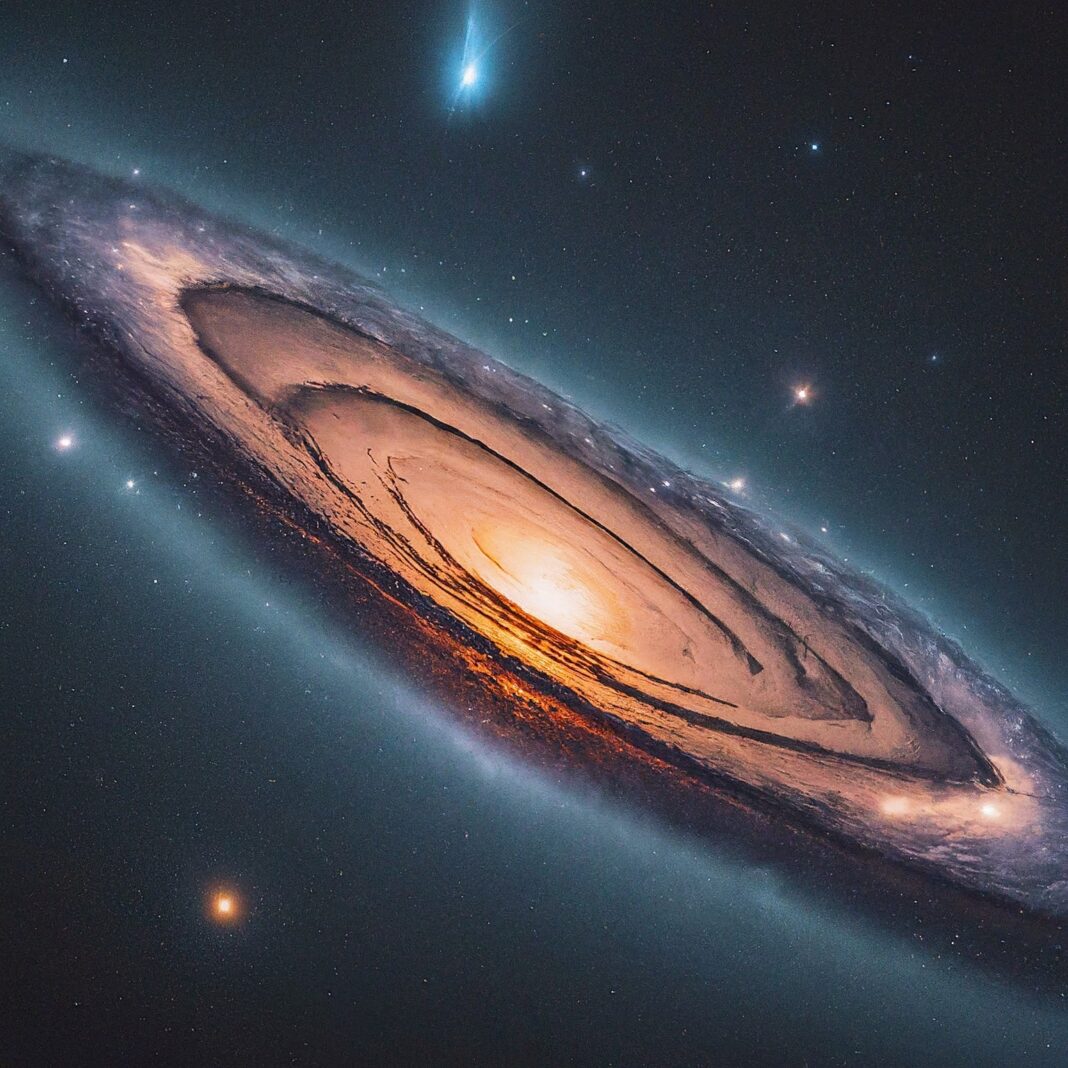NASA’s Roman Space Telescope is set to transform our understanding of the universe, offering unprecedented insights into galactic fossils and the elusive dark matter that dominates cosmic mass. Slated for launch in 2027, this cutting-edge telescope will explore the Milky Way and nearby galaxies, unveiling the secrets of their origins and evolution. By focusing on ancient stellar remnants and the mysterious dark matter, NASA’s Roman Space Telescope will push the boundaries of astronomical research.
Investigating Galactic Fossils with NASA’s Roman Space Telescope
One of the key missions of NASA’s Roman Space Telescope is to study galactic fossils—ancient groups of stars that hold vital clues about the formation and evolution of galaxies. These stellar remnants, including tidal tails, stellar streams, and halo stars, extend far beyond the visible portions of galaxies. The Roman Telescope’s high-resolution imaging capabilities will enable scientists to reconstruct the events that shaped galaxies over billions of years, providing a detailed record of their history.
Robyn Sanderson, the deputy principal investigator of the Roman Infrared Nearby Galaxies Survey (RINGS) at the University of Pennsylvania, compared the study of these galactic fossils to an archaeological excavation. “It’s like piecing together bones in an excavation to rebuild an ancient creature,” Sanderson explained. The Roman Telescope’s ability to observe vast areas of the sky with high angular resolution will allow researchers to piece together these cosmic clues, offering a clearer understanding of how galaxies like the Milky Way have evolved.
Understanding our own galaxy’s history is particularly challenging due to our position within it. Professor Raja GuhaThakurta from UC Santa Cruz emphasized this limitation, noting, “We simply don’t have a selfie stick long enough to take those kinds of photos.” However, NASA’s Roman Space Telescope will overcome this challenge by allowing scientists to study other galaxies that resemble the Milky Way. By comparing these external galaxies to our own, researchers can infer the processes that have shaped the Milky Way, offering a broader context for our place in the cosmos.
Shedding Light on Dark Matter
NASA’s Roman Space Telescope will also play a crucial role in the investigation of dark matter, a substance that makes up about 80% of the universe’s mass yet remains largely undetectable by conventional observational methods. Dark matter is believed to be responsible for the gravitational forces that hold galaxies together, but it does not emit, absorb, or reflect light, making it invisible to traditional telescopes.
The RINGS survey, a potential project for the Roman mission, will focus on studying the halos of galaxies—regions dominated by dark matter. These halos extend far beyond the visible boundaries of galaxies and are often 15 to 20 times larger than the galaxies themselves. By observing the distribution of stars and other matter within these halos, NASA’s Roman Space Telescope will provide critical data for testing dark matter theories and understanding its role in galaxy formation.
Ultra-faint dwarf galaxies, in particular, are valuable for studying dark matter because they contain very few stars and are almost entirely composed of dark matter. GuhaThakurta explained, “Ultra-faint dwarf galaxies are so dark matter-dominated that they have very little normal matter for star formation. Even when they do form stars, the process often blows away more of the gas needed to create the next generation of stars, making them deeply inefficient at producing stars.” These galaxies act as nearly pure dark matter laboratories, offering a unique opportunity to study this elusive substance.
NASA’s Roman Space Telescope will capture high-resolution images of these faint galaxies and their surrounding halos, enabling scientists to observe the effects of dark matter on a much larger scale than currently possible. As Ben Williams, principal investigator of RINGS at the University of Washington, noted, “With Roman, we’ll suddenly have 100 or more of these fully resolved galaxies,” significantly expanding the dataset available for dark matter research.
A New Era of Galactic Exploration
NASA’s Nancy Grace Roman Space Telescope represents a significant leap forward in our ability to explore and understand the universe. Often referred to as the “mother” of the Hubble Space Telescope due to its advanced capabilities, the Roman Telescope is expected to revolutionize our understanding of both visible and invisible components of galaxies. Its large field of view and high resolution will allow astronomers to study not only individual stars and stellar populations but also the broader structures that govern the evolution of galaxies.
By combining the Roman Telescope’s imaging data with deep, wide-field spectra from ground-based telescopes like the Keck II 10-meter telescope and the DEIMOS spectrograph, scientists will be able to apply advanced techniques, such as co-added surface brightness fluctuations (SBF) spectroscopy. This method, developed with contributions from GuhaThakurta, promises to enhance our understanding of the formation and evolution of galaxies, ranging from those comparable in size and luminosity to the Milky Way to much smaller or larger systems.
As we anticipate the launch of NASA’s Roman Space Telescope, the future of galactic exploration and our comprehension of the cosmos look brighter than ever.
- Roman Space Telescope mission overview (https://www.nasa.gov/roman)
- Galactic fossils and their importance in astronomy (https://www.space.com/galactic-fossils)
- Understanding dark matter and its role in the universe (https://www.darkmatter.org)











